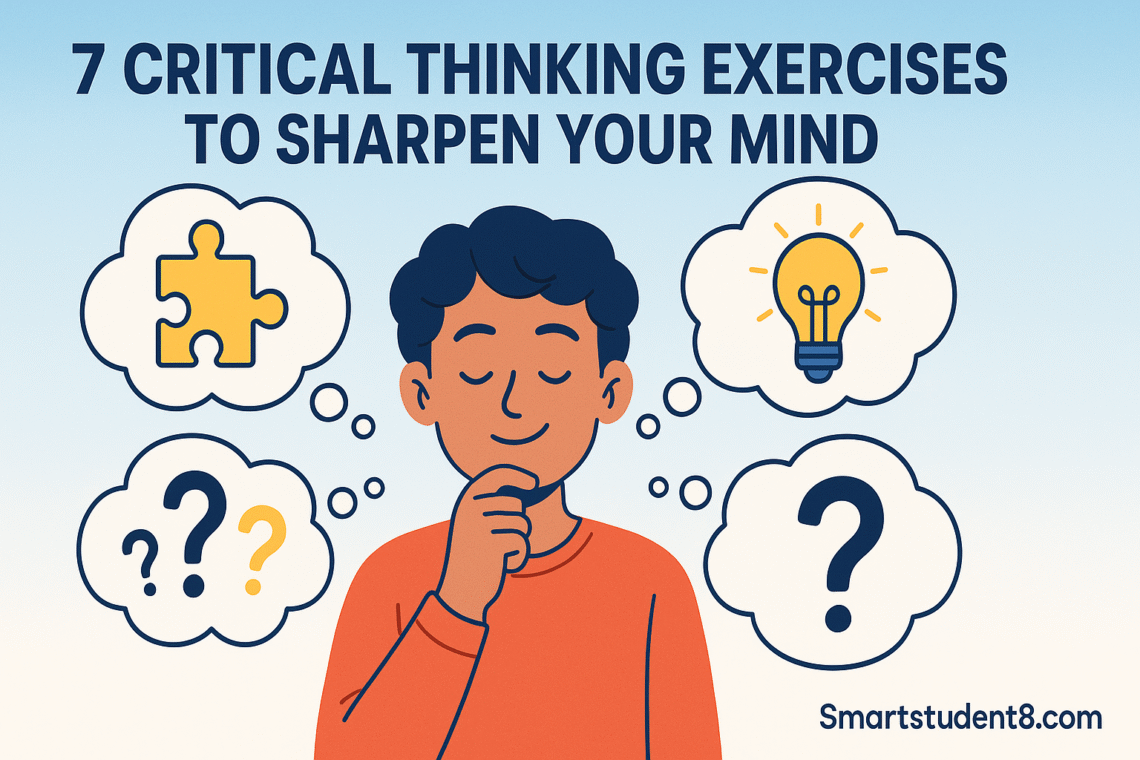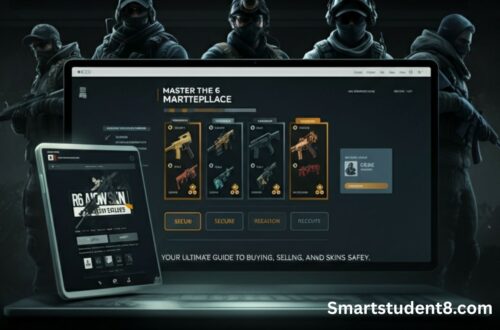How do we think critically, and what exactly does that mean? The goal isn’t to be negative or find fault. The process is to analyze information in order to make a decision objectively. You can use it to go beyond the obvious, ask questions, and come up with better choices. Critical thinking is not a natural trait. It’s something that you can develop with consistent practice. As you continue to challenge your thinking and examine different viewpoints, your analytical capabilities will become stronger. You can think of it as learning a language, the language of logic, and then mastering that language will open a whole new world.
The ability to think critically is essential in many aspects of our lives, including navigating complicated work projects and making informed personal decisions. But many of us never received formal instruction on how to think critically. This skill is supposed to be absorbed by osmosis. But true mastery takes deliberate effort. It’s good to know that everyone can learn how to improve critical thinking. To improve your critical thinking, you need to have a curiosity to know, the desire to grasp, and a set of brain exercises.
The article explores several interesting and useful exercises to improve problem-solving abilities, enhance creative thinking, and make informed decisions. You can sharpen your analytical skills by incorporating the activities into your daily routine.
What is Critical Thinking? Why does it matter?
It is the process of thinking critically and deconstructing arguments in a logical, open-minded, and rational way. Understanding the logic between ideas is key. It also involves identifying and deconstructing arguments, detecting contradictions, and solving issues systematically. The critical thinker does not accept the information presented at face value. A critical thinker digs deeper. They question sources, weigh evidence, and consider biases before concluding. In the early days of my career, I was involved in a failed project.
All the members of the team were quick to point fingers at external causes. By stepping back to apply critical thinking, we identified a fundamental problem in our process, which everyone else had missed. It was through this experience that I learned the importance of looking within and challenging our own assumptions.
It is important to be able to think critically. It isn’t easy to separate fact from opinion or reliable information from false information when we are bombarded by information. You can easily be convinced by emotion or faulty logic if you lack analytical thinking. You can become a better problem solver, an informed consumer, and a thoughtful leader by developing these skills. You can navigate through the complex world of today with confidence and clarity.
Exercise 1: Five Whys Technique
Five Whys is a simple but powerful exercise for improving analytical reasoning. The “Five Whys” method, developed by Sakichi Toyoda as the founder and CEO of Toyota, is at the core of Toyota’s philosophy of problem solving. It is easy to understand: you ask the question “Why?” as often as you need (or five times) when you are faced with a challenge. You will then be able to get past surface symptoms in order to uncover the underlying cause. You will not be able to treat the problem by treating only the symptoms.
This can often lead to a recurrence of the issue. The process forces a higher level of analysis that helps to understand how the cause-and-effect chain led up to the initial problem.
Consider, for instance, the case of a website that has crashed.
- How did your website crash? It was because the server had too many users.
- How did the unexpectedly large number of visitors arrive? It was a marketing campaign.
- How could the sudden traffic surge be unexpected? It’s possible that the marketing department didn’t tell the IT department about the launch of their campaign.
- Why didn’t they communicate? There’s no formal process to ensure inter-departmental coordination of major campaigns.
- There is no internal process. Your company has experienced rapid growth, and your processes haven’t kept up.
The initial issue (crashing website) is only a sign of an organizational problem that’s much more serious. This is not a simple matter of getting a new server, but rather a system that allows departments to communicate with each other. By practising the Five Whys, you train your mind to search for deeper causes and not get stuck on surface problems. This is fundamental in developing critical thinking.
Exercise 2 – Mastering the Art of Questioning Assumptions
All of us make assumptions daily. Mental shortcuts allow us to get around the world quickly without having to analyze each detail. But these assumptions can be blind spots that prevent us from seeing the whole picture and finding the right solution. One of the most important exercises in critical thinking is to question and identify assumptions, both yours and others’.
A team I worked with was confident that a brand-new product feature would become a big hit. It took us months to develop, but it flopped when it was released. The failure of our product was due to a single assumption that had not been tested: the users were interested in this feature. No one ever asked, “How are we sure that this is correct?”
You can practice by focusing on a particular belief that you share or an upcoming decision. You must write down your answer. Then, write down all of the assumptions underpinning that belief or choice. You should ask: “Is this 100% true?” Do I have any evidence to back it up? Was it possible that the opposite was true? You can question a timeline you have assumed when planning a job. This task is expected to take us two weeks. Why? What is the basis for that? How could it be delayed? This is a process that’s often referred to as playing the “devil’s advocate” with oneself.
Exercise 3: Inference Ladder
The Ladder Of Inference model shows how quickly we can jump from one observation to another, without really realizing our mental leaps. This exercise allows you to become aware of the way you think and how you form your beliefs. This ladder is made up of several rungs.
- Facts Observable: How objective is the current situation?
- Data Selected: On which details do I want to concentrate?
- Interpreted meaning: Which interpretation do I give to my selected data?
- Using my interpretation to make assumptions: Which assumptions will I be making?
- Conclusions Based on my assumptions, what conclusions can I make?
- My existing beliefs: What are my current conclusions?
- Actions: How do I act on the basis of my beliefs?
Imagine that your colleague does not respond to an email. You may quickly move up the ladder if you note a lack of response. You choose to be the most important fact. You read it as an indication that the person is ignoring your input. You assume HTML1, they are not interested in your opinion. You assume the person is uncooperative. You confirm your beliefs about them. Then act and avoid these people on future projects. It is possible to challenge yourself by walking backward down the ladder. Was the email even seen? There is another reason? It encourages more reflective and less reactive decisions.
Exercise 4 – Six Hats of Thinking for Different Perspectives
Edward de Bono developed the Six Thinking Hats, a method that encourages creative thinking. It also allows you to see a situation from many different angles. The Six Thinking Hats is particularly helpful in groups to ensure an accurate analysis and prevent groupthink. Each “hat”, or style of thought, is represented by a “hat”, and each group member “wears” a hat as they explore an issue. It forces you to step out of your typical thinking patterns. My experience as a workshop leader has shown me that this technique can transform an otherwise stale discussion into one of dynamic problem-solving.
What do the six hats represent?
- White Hat (Facts): focus solely on data. What are the facts? What’s missing?
- Red Hat (Feelings): explores feelings and intuition. What is our gut reaction? What do we feel about it?
- Black Hat (Caution): Examines the possible negatives. What are they? What is the risk? What could go wrong?
- Yellow Hat (Optimism): Focus on benefits and positives. What are the possibilities? Why is this going to work?
- Green Hat (Creativity): Ideas and new possibilities. Alternative solutions exist? What would be a different way of doing things?
- Blue Hat (Process): Manages your own thinking process. What is the agenda for today? Next, which hat? This hat is the one that controls the discussion.
Applying each hat to the problem will ensure an unbiased evaluation. To make your decision-making process stronger and more creative, you can do this either alone or as a team.
Exercise 5: Distinguishing Fact from Opinion
In our information-saturated world, the line between fact and opinion is often blurred, especially in news reports, social media, and marketing. Dissecting statements in order to identify whether they represent objective facts or subjective opinions is a crucial exercise to improve critical thinking. An objectively verifiable fact is any statement that can be proved true or wrong. A statement that is not backed up by objective evidence, but expresses an opinion, belief, or feeling. A fact is, for example: “This vehicle model has received a 5-star safety rating.” This is a statement of opinion.
Use a recent news story, editorial, or even social media posts to learn this technique. You can highlight factual statements in one colour and opinions in another. You should ask: Is this verifiable? How would I find the evidence? What is the source of their opinion? They may have biases. What do they want me to think? This powerful but simple exercise will train your brain to question what you are told constantly. The exercise creates a mental screen that allows you to base your decisions on facts rather than other people’s opinions.
Exercise 6: Thinking backwards, or Inversion
Charlie Munger popularised the Inversion model. You ask, “What can cause me to fail?” instead of “How do I reach this goal?”. This reverse engineering of failure allows you to identify obstacles and risks that you may otherwise have overlooked. You are forced to look at a situation from a different perspective. It’s a technique I have used often in planning projects. We spend more time thinking about all of the possible outcomes for the project than just defining the key steps. Pre-mortem analyses often reveal critical risks that we didn’t consider and allow us to incorporate safeguards at the outset.
Say your objective is to start a successful business. You could ask yourself, using inversion: “What is the one thing that will ensure our startup’s failure?” Some of the answers you might get are: out-of-cash, building a useless product, having a dysfunctional marketing team, being outcompetent, etc. By identifying clear failure paths, you can create strategies that will help avoid them. Your focus will be on finding enough funding, validating the product with actual users, fostering positive team cultures, etc. The inversion technique is an effective way to solve problems because it is often much easier to recognize and avoid the things you wouldn’t like than to find a solution that is perfect for what you would want.
Exercise 7: Argument Mapping
The visual method of deconstructing an argument and evaluating it is called Argument Mapping. You can see how a reasoning line is structured, from the conclusions to the premises that back it up, as well as any opposing arguments. Visualizing it will help you to identify any logical flaws, unsupported statements, or hidden assumptions. Consider it like creating a flow chart for an argument. This advanced method of analysis brings clarity and precision to even the most complex discussions. It goes beyond simple lists of pros and cons to demonstrate how various pieces of evidence are related to one another, as well as the conclusions.
You start by putting the most important conclusion in the centre. You add the boxes that support this conclusion below. You can add another layer of reasons if you have more. You can add co-premises, which are arguments that only make sense when linked. Add objections and counterarguments to the section of an argument you are challenging. This visual representation helps you assess the strengths and weaknesses of different parts of an argument. The premise is weak. Is the conclusion logically derived from the premises and vice versa? The ability to analyze complex information and create your own arguments can be dramatically improved by working with editorials or other academic papers.
Read More: Your Ultimate Guide to Social Media Stuff Embedtree
Conclusion: Make Critical Thinking a Daily Habit
Improving your critical thinking abilities is a process that requires constant practice and reflection. Here are some exercises to train your mental faculties. They range from simple Five Whys questions to more complex Six Thinking Hats. Like physical training builds muscles, these mental workouts help to develop your capacity for rational and clear thinking. You must integrate these exercises into your life. You can challenge assumptions in a team discussion, plan your personal project using the inversion method, and learn to distinguish between fact and opinion when reading news.
Making a conscious choice to follow these guidelines will help you transform your perspective on the world. You’ll be better at analysing problems, making decisions, and communicating ideas. But more importantly, it will help you develop the mental agility necessary to navigate a constantly evolving and complex environment successfully. You can start with one exercise or two that are meaningful to you, and then make it a regular habit. Over time, you will find that critical thought is not an activity, but an intuitive process.





